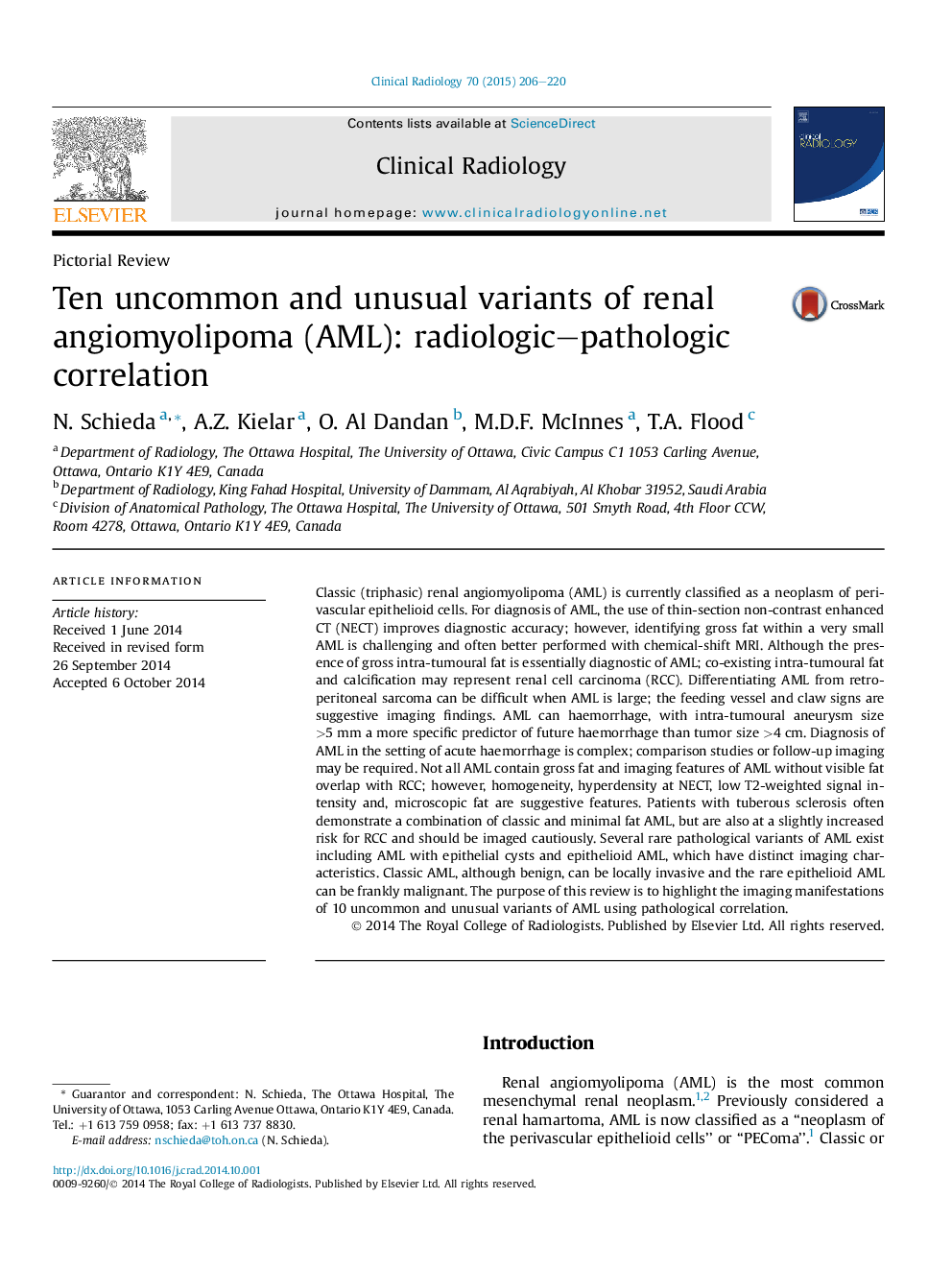| Article ID | Journal | Published Year | Pages | File Type |
|---|---|---|---|---|
| 6191002 | Clinical Radiology | 2015 | 15 Pages |
Classic (triphasic) renal angiomyolipoma (AML) is currently classified as a neoplasm of perivascular epithelioid cells. For diagnosis of AML, the use of thin-section non-contrast enhanced CT (NECT) improves diagnostic accuracy; however, identifying gross fat within a very small AML is challenging and often better performed with chemical-shift MRI. Although the presence of gross intra-tumoural fat is essentially diagnostic of AML; co-existing intra-tumoural fat and calcification may represent renal cell carcinoma (RCC). Differentiating AML from retroperitoneal sarcoma can be difficult when AML is large; the feeding vessel and claw signs are suggestive imaging findings. AML can haemorrhage, with intra-tumoural aneurysm size >5Â mm a more specific predictor of future haemorrhage than tumor size >4Â cm. Diagnosis of AML in the setting of acute haemorrhage is complex; comparison studies or follow-up imaging may be required. Not all AML contain gross fat and imaging features of AML without visible fat overlap with RCC; however, homogeneity, hyperdensity at NECT, low T2-weighted signal intensity and, microscopic fat are suggestive features. Patients with tuberous sclerosis often demonstrate a combination of classic and minimal fat AML, but are also at a slightly increased risk for RCC and should be imaged cautiously. Several rare pathological variants of AML exist including AML with epithelial cysts and epithelioid AML, which have distinct imaging characteristics. Classic AML, although benign, can be locally invasive and the rare epithelioid AML can be frankly malignant. The purpose of this review is to highlight the imaging manifestations of 10 uncommon and unusual variants of AML using pathological correlation.
